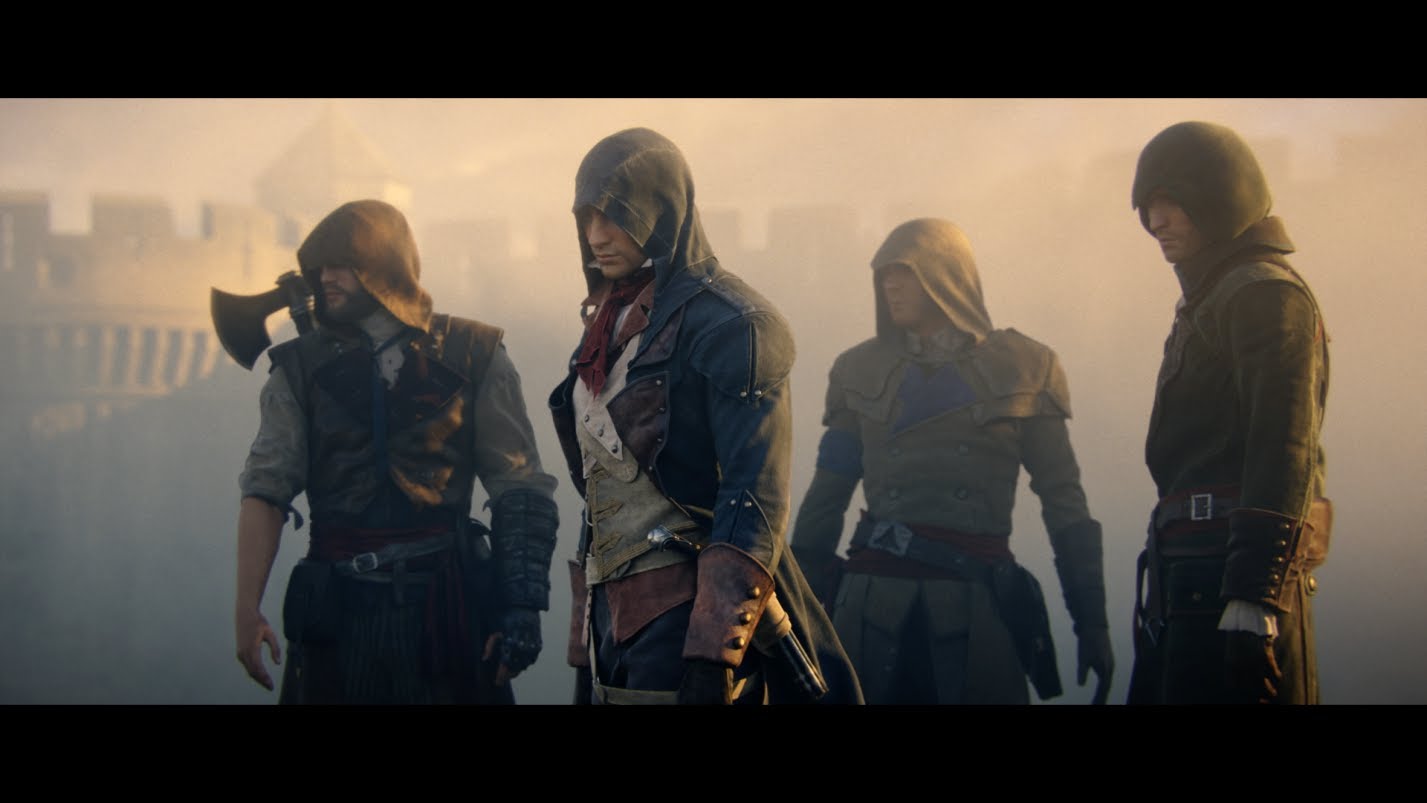
Assassin’s Creed: Unity Places Players Amidst the Bloody Bourgeoisie
“Assassin’s Creed: Unity” has a lot of cool stuff going for it, but the setting is our favorite aspect. The French Revolution is one of the most interesting time periods in history, not only for its contributions to democracy, but also because man that time was nuts. Sure, Americans had a revolution to get freedom from a king, but it didn’t involve dragging him out of his palace and shoving him face-first into a guillotine.
The demo starts in 1793, during what is known as the Reign of Terror. This was a time when France was fractured by rival political groups, and the nation was falling into chaos. Thieves and murderers ran the streets, people were executed publicly every day, and Paris was one of the most dangerous cities in the world. With everything so crazy, it’s the perfect place for an Assassin.
Starting from a perch with the gargoyles of Notre Dame, our Assassin surveyed the bustling city streets. We didn’t have to be in Paris long before things went awry. A woman got her purse snatched, while around the corner people huddled around a store window to look inside at a murdered shopkeeper. Behind us we could hear someone getting bludgeoned for some indiscretion. We had the option to intervene in any of these events, but right from the start “Unity” puts you in a situation where there is too much crime and poverty for you to fix on your own. That’s why you need to take out the men creating this madness.
The combat in “Unity” is more precise and controlled than in previous “Assassin’s Creed” games, but it’s also more difficult: A group of guards or thieves can take you out more easily, so no more rushing headlong into battles. As a result, there’s a larger focus on stealth this time around. In our demo we had to make our way up stealthily through a guard-filled home to interrogate a man on the top floor. While creeping through the rooms we witnessed the new AI mechanics: The citizens of 18th-Century Paris have jobs and lives, and they go about them. Guards aren’t just walking on paths, they have tasks to do, and places to be. You have to stay on your toes while maneuvering through this very living city.
One of the best examples of the liveliness of the Parisian citizens was during a public execution scene. People gathered around, filling the city square. They booed at the prisoner, and cheered when he was beheaded in front of them. Seconds later, as we dropped from the sky and assassinated a Templar, the crowd gasped and shrieked, pushing back away. The bravest ones actually stepped forward to help fight. These aren’t jut NPCs anymore; they’re very aware of the world in a way that “Assassin’s Creed” has never shown before.
If you were concerned that a return to European cities meant a step back for “Assassin’s Creed,” fear not. “Unity” feels fresh and modern, improving on some of the core mechanics of the series, and creating a world that feels so much larger and more alive than ever before. We can’t wait to try out the multiplayer missions, and the character customization, but from what we’ve seen, “Unity” may be the grittiest, biggest, deadliest “Assassin’s Creed” ever.
